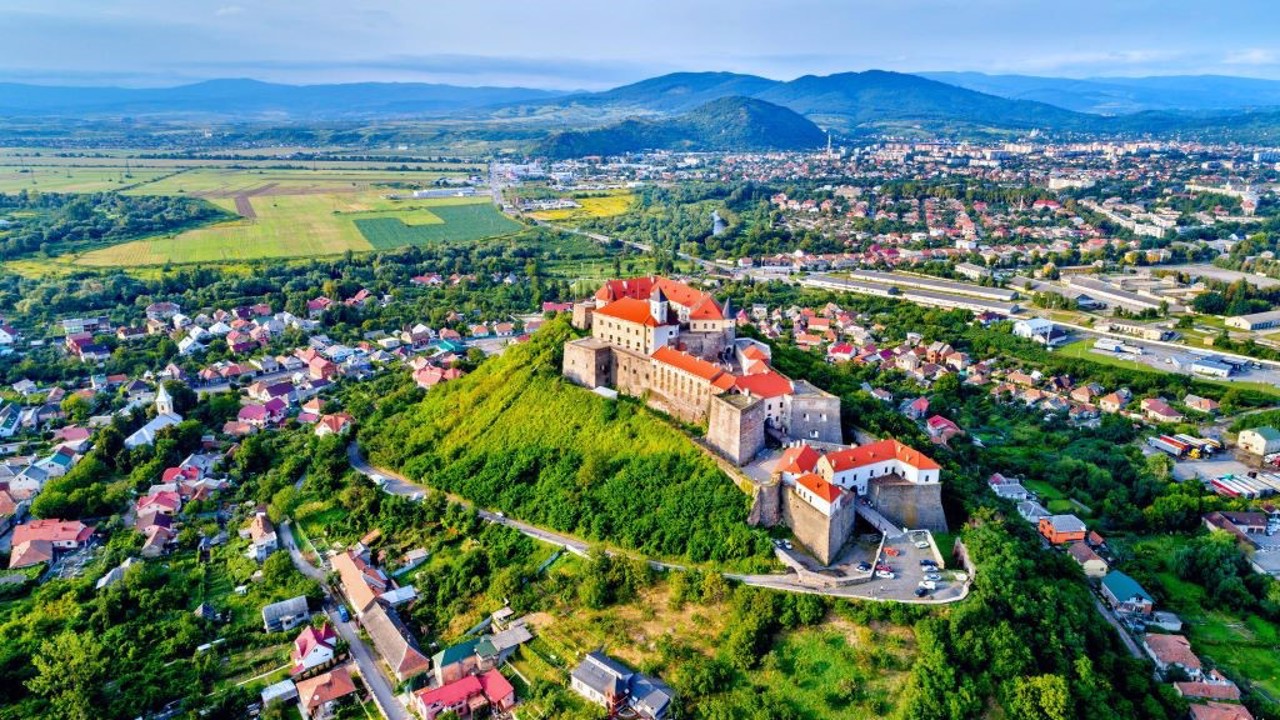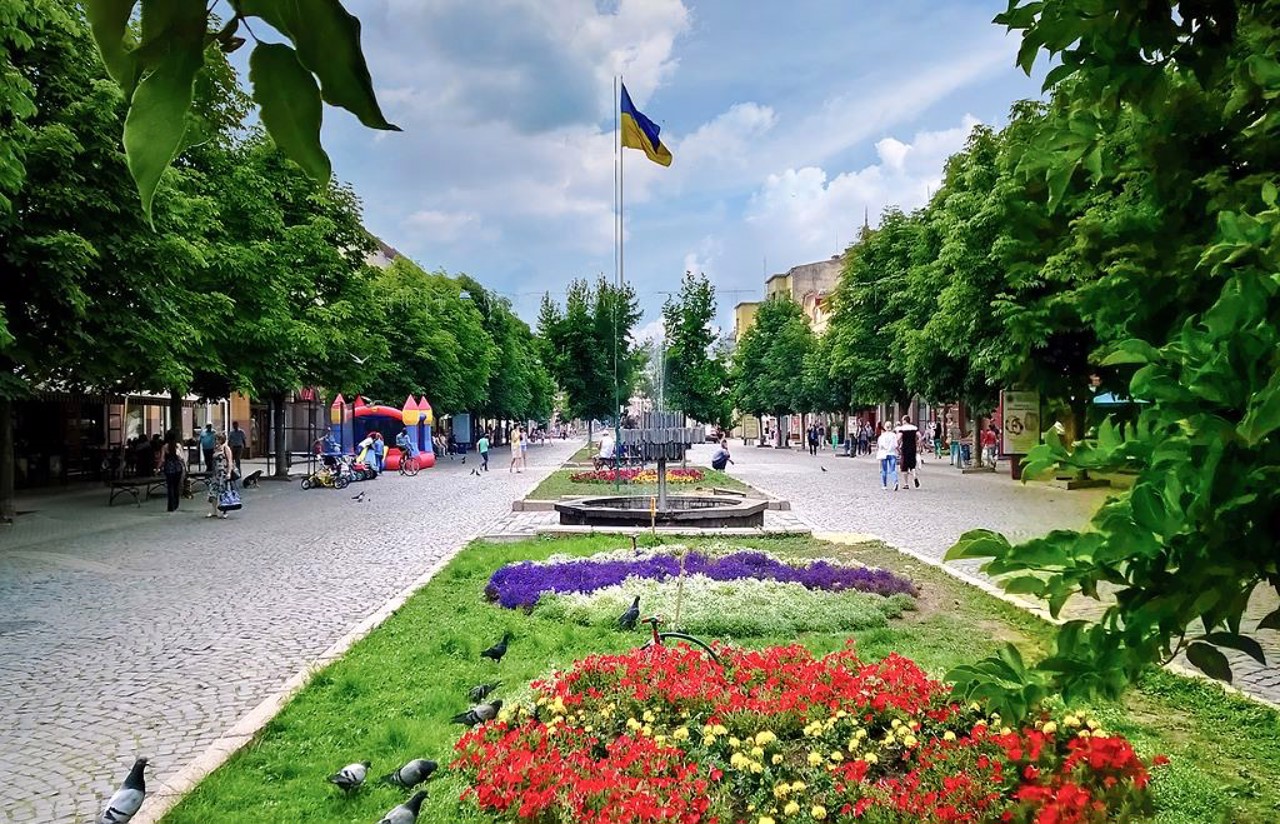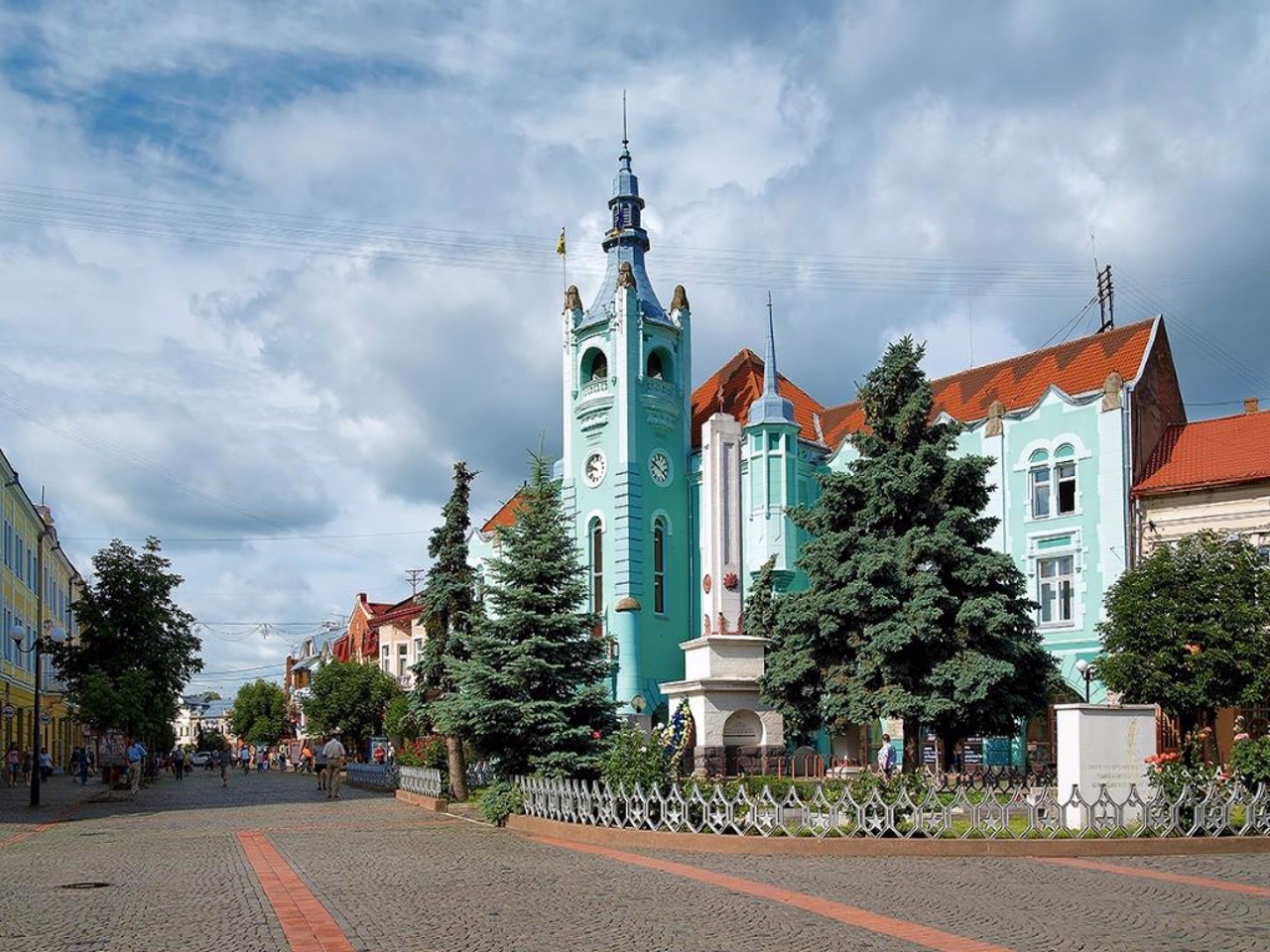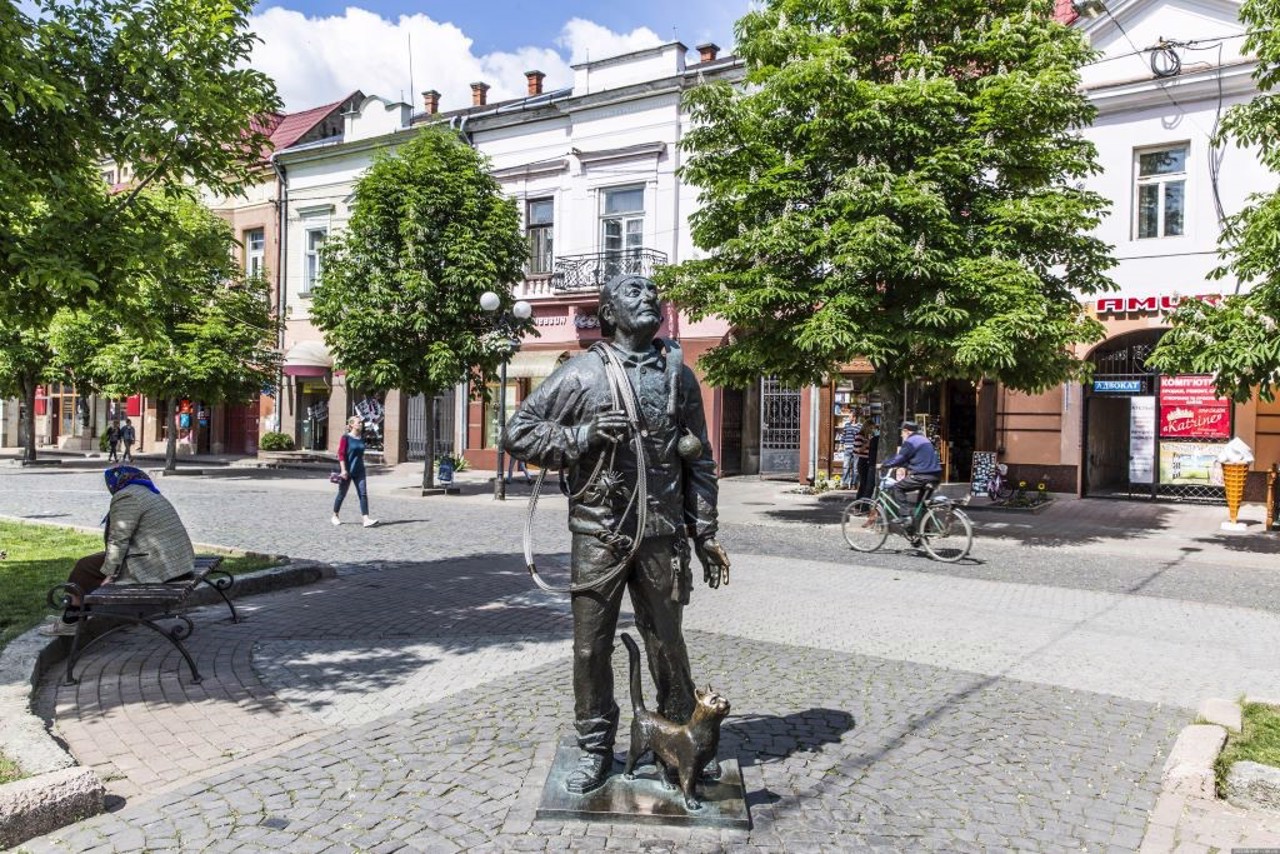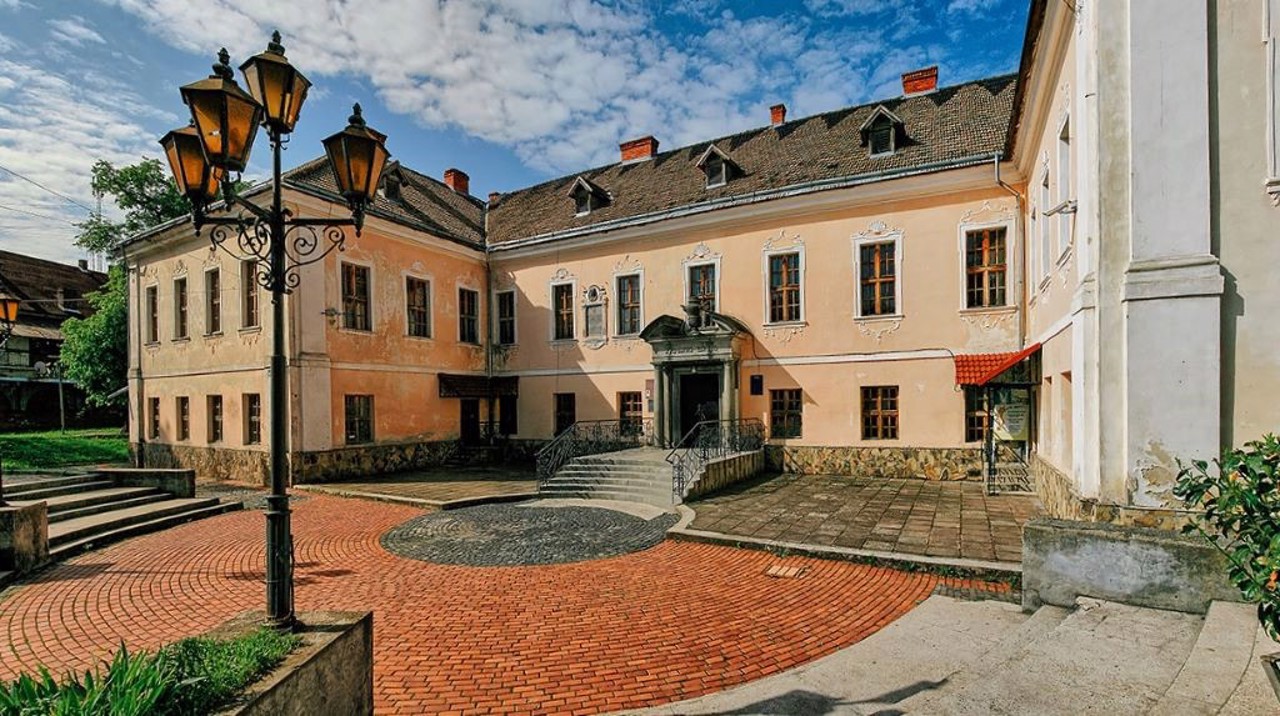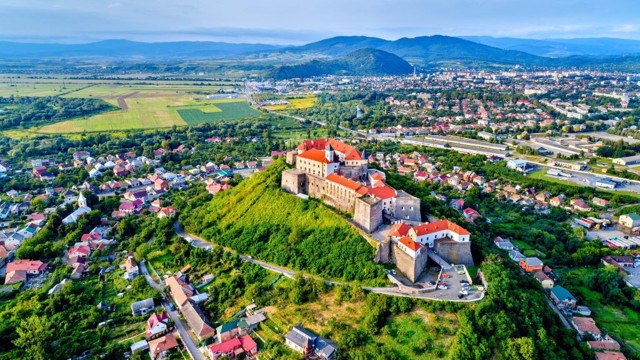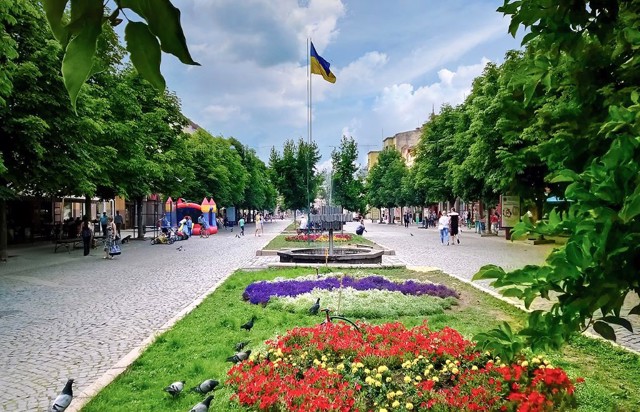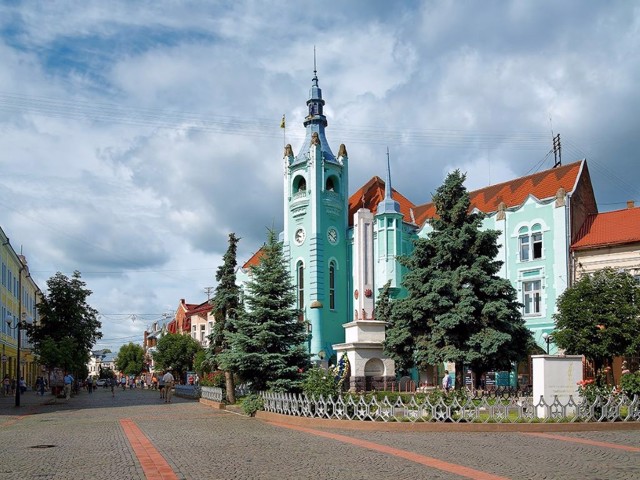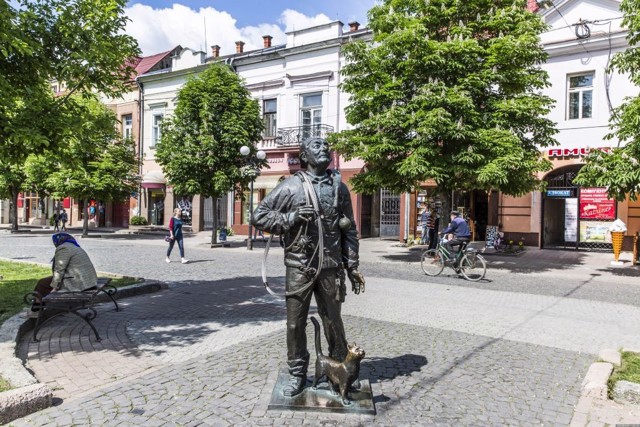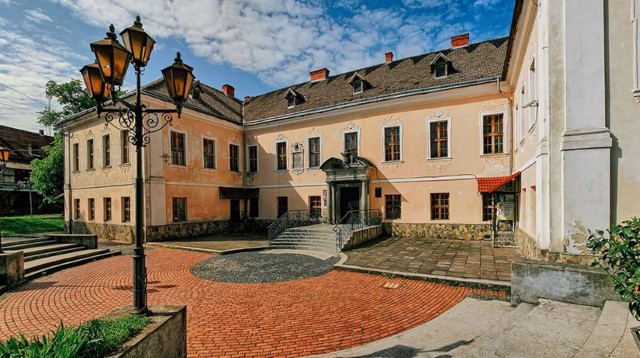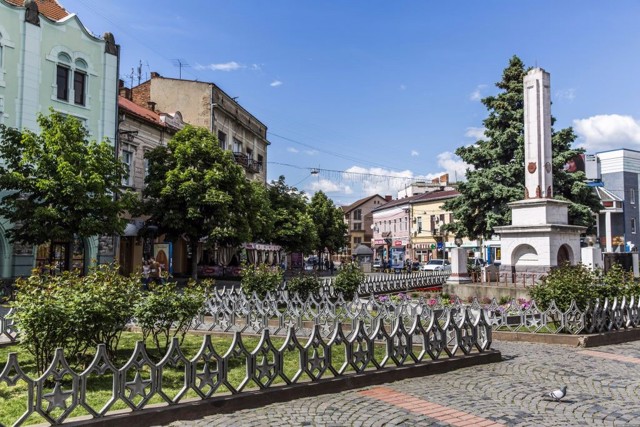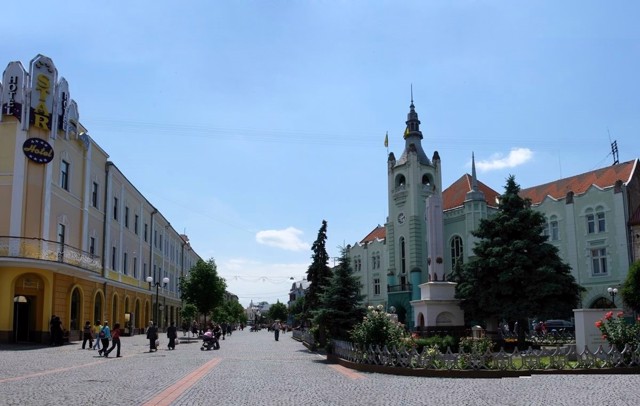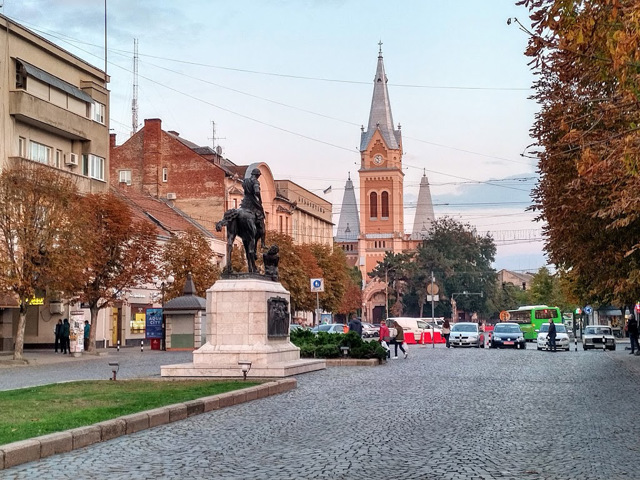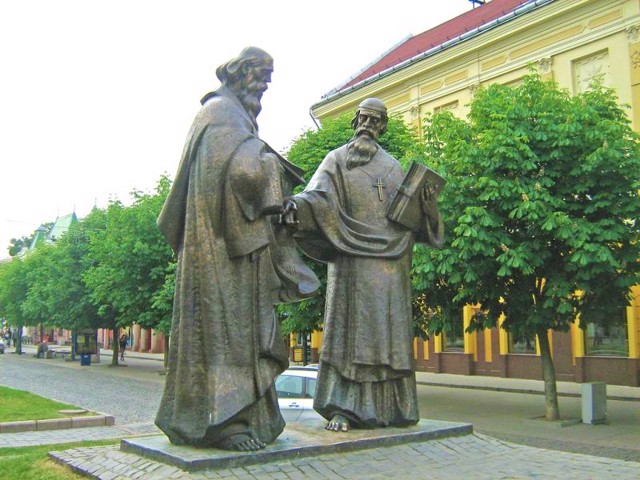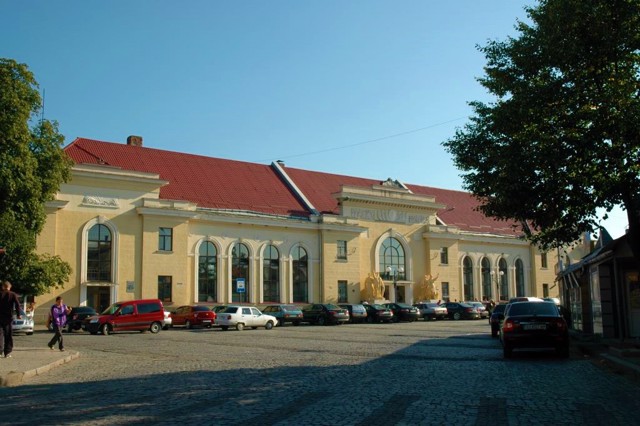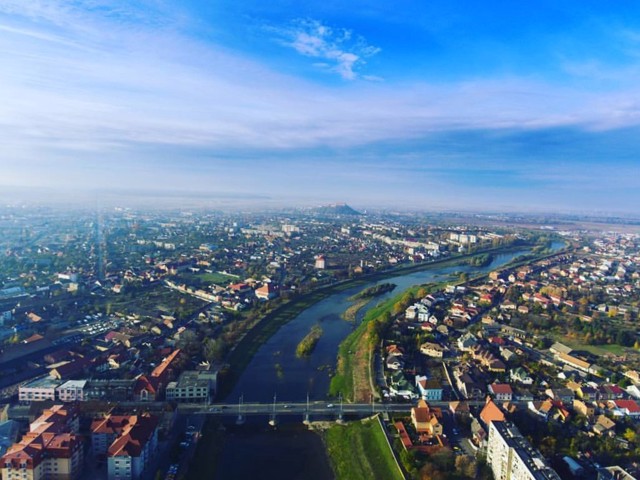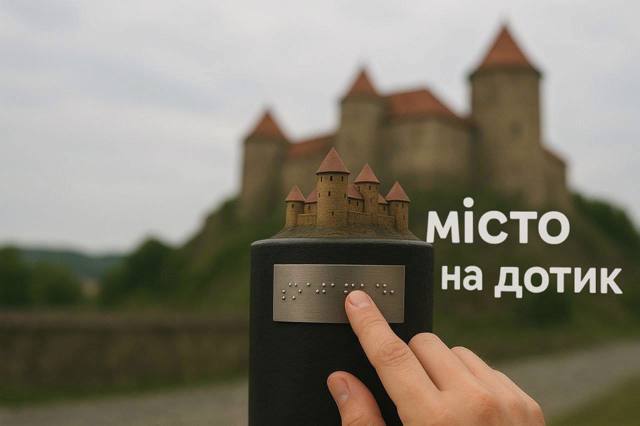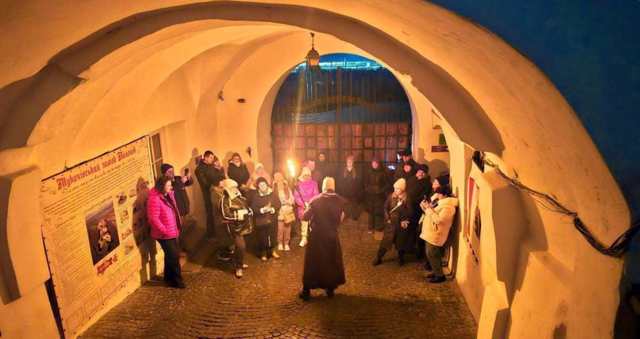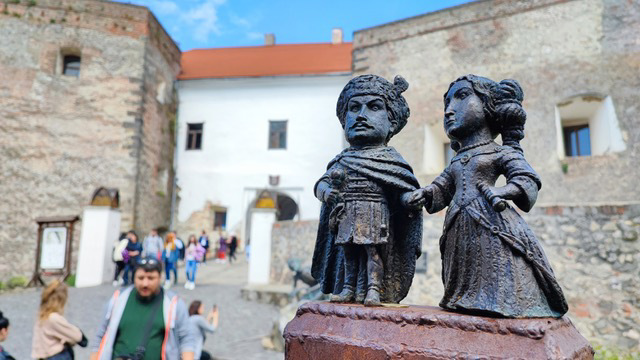Functional temporarily unavailable
General information about Mukachevo
The city of Mukachevo is a large regional center on the Latoritsa River, the second largest city in Transcarpathia.
It arose in the 9th century as a military fortification of the East Slavic tribe of White Croats, and was first mentioned in the Gesta Gungarorum chronicle. In the 10th-11th centuries, it was part of Rus (Kyiv State), the Slavic population retained the self-name "Rusyns". After the capture of the region by Hungary, it became its fortress.
The main attraction is Palanok Castle (XIV-XVII centuries), located separately on a mountain of volcanic origin, an example of medieval defensive architecture. It consists of the Upper, Middle and Lower castles, built at different times. At the end of the 14th century, Mukachevo Castle became the residence of Prince ...
The city of Mukachevo is a large regional center on the Latoritsa River, the second largest city in Transcarpathia.
It arose in the 9th century as a military fortification of the East Slavic tribe of White Croats, and was first mentioned in the Gesta Gungarorum chronicle. In the 10th-11th centuries, it was part of Rus (Kyiv State), the Slavic population retained the self-name "Rusyns". After the capture of the region by Hungary, it became its fortress.
The main attraction is Palanok Castle (XIV-XVII centuries), located separately on a mountain of volcanic origin, an example of medieval defensive architecture. It consists of the Upper, Middle and Lower castles, built at different times. At the end of the 14th century, Mukachevo Castle became the residence of Prince Fedir Koriatovych (Koryatovych) of Podillya, who fled to Transcarpathia from the Lithuanians. The castle also belonged to the dynasty of Transylvanian princes Rakotsi, and was a stronghold of the Hungarian national liberation struggle.
The Mukachevo Monastery (XIV-XVIII centuries) on Chernecha Hill was also founded by Prince Koriatovych. The "White House" palace (XV-XVIII centuries) belonged to the Schenborn Counts, decorated with luxurious ornaments and a magnificent portal. The decoration of the cozy pedestrian center is the town hall building, as well as the monument to Cyril and Methodius.
Mukachevo City Day is celebrated on the last Saturday of May.
Місто Мукачево - великий райцентр на річці Латориця, друге за величиною місто Закарпаття.
Виникло в IX сторіччі як військове укріплення східнослов'янського племені білих хорватів, вперше згадується в хроніці "Геста Гунгарорум". У X-XI столітях входило до складу Русі (Київської держави), слов'янське населення зберегло самоназву "русини". Після захоплення краю Угорщиною стало її фортецею.
Головна визначна пам'ятка - замок Паланок (XIV-XVII століття), розташований окремо на горі вулканічного походження, зразок середньовічної оборонної архітектури. Складається з вехнього, Середнього та Нижнього замків, збудованих в різний час. В кінці XIV століття Мукачівський замок став резиденцією подільського князя Федора Коріатовича (Корятовича), який втік на ...
Місто Мукачево - великий райцентр на річці Латориця, друге за величиною місто Закарпаття.
Виникло в IX сторіччі як військове укріплення східнослов'янського племені білих хорватів, вперше згадується в хроніці "Геста Гунгарорум". У X-XI столітях входило до складу Русі (Київської держави), слов'янське населення зберегло самоназву "русини". Після захоплення краю Угорщиною стало її фортецею.
Головна визначна пам'ятка - замок Паланок (XIV-XVII століття), розташований окремо на горі вулканічного походження, зразок середньовічної оборонної архітектури. Складається з вехнього, Середнього та Нижнього замків, збудованих в різний час. В кінці XIV століття Мукачівський замок став резиденцією подільського князя Федора Коріатовича (Корятовича), який втік на Закарпаття від литовців. Також замок належав династії трансільванських князів Ракоці, був оплотом угорської національно-визвольної боротьби.
Мукачівський монастир (XIV-XVIII століття) на Чернечій горі також заснований князем Коріатовичем. Палац "Білий дім" (XV-XVIII століття) належав графам Шенборнам, оздоблений розкішним орнаментом, чудовим порталом. Окрасою затишного пішохідного центру є будівля ратуші, а також пам'ятник Кирилу та Мефодію.
День міста Мукачево відзначає в останню суботу травня.
Сплануй своє перебування у Mukachevo
What to see and where to go in Mukachevo
Tourist attractions and museums of Mukachevo
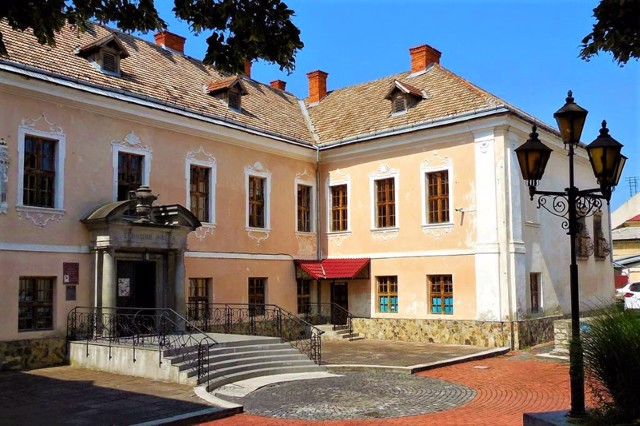
Palace of Princes Rakotsi (White House)
Palace / manor , Architecture , Museum / gallery
The Palace of Princes Rakotsi in Mukachevo is better known as the "White House". It is located in the center of the city, inside the block on Cyril and Methodius Square. The palace was built in the XVII-XVIII centuries in a mixed Renaissance and Baroque style. It owes its second name to the initial color of the facade.
The palace served as the city family residence of the princes of the Transylvanian Rakotsi dynasty. In 1726, it became the property of the Shenborn family, for whom the famous German architect Yohan-Baltazar Neyman carried out a major reconstruction of the building and completed a new building in compliance with architectural proportions and symmetry. A powerful baroque portal stands out, next to which is placed a sculptural portrait of Prince Ferents II Rakotsi (according to legend, it was here that the prince wrote an appeal to the Hungarian people calling for an uprising against the Habsburgs).
Despite its respectable age, the "White Palace" is in excellent condition. Inside, the original interior has been largely preserved: cross vaults, ancient stucco, a marble fireplace, a bronze chandelier in the Art Nouveau style. Since Soviet times, the palace has been home to the Mukachevo Children's Art School, named after the founder of the Hungarian school of realistic painting, Mihay Munkachi. In the hall of the school there is a museum exposition dedicated to the artist, in particular, a plaster form of the future monument to Munkachi. There is a bust of Mihay Munkachi on the square in front of the palace.
The Palace of the Princes of Rakotsi is an architectural monument of national importance. Restoration is planned, after which the White House will be equipped with a museum of the Rakotsi family and a hall for receiving distinguished guests.

Palanok Castle
Castle / fortress , Architecture , Museum / gallery
Mukachevo Castle "Palanok" is an outstanding historical and architectural landmark, the ancestral nest of the Transylvanian princes Rakotsi.
The castle was built on a high volcanic mountain (65 meters) in several stages. In the 11th century, by order of King Laslo I, a stone tower-donjon was built on the site of the ancient Rus wooden fortifications, in 1321, by the will of King Karl Robert, Italian masters expanded the fortress, in 1394, Prince Fedir Koratovych, exiled from Podillya, took up the reconstruction ), and the fortress acquired its current appearance in the 17th century under Dyerd I Rakotsi.
Mukachevo Castle controlled the trade routes through the Veretsky Pass connecting the Middle Danube Valley with Eastern Europe. The outer lines of defense included a moat, a rampart, and a stockade (palanok), which gave the entire castle its name. A bridge across a dry moat led to the Lower Castle, a square for celebrations was provided in the Middle Castle, and princely chambers and a siege well (86 meters) were located in the Upper Castle.
The castle withstood many sieges. The most famous defense in 1685-1688 was led by Ilona Zrini, the widow of Ferents Rakotsi. For three years, she repelled the attacks of the Austrians, who were able to force the garrison to surrender only by trickery. For a long time, the castle was a stronghold of the Hungarian national liberation struggle under the leadership of her son Ferents II Rakotsi. Monuments were erected to both of them.
Under the Austrians, a prison for political prisoners was located here, and under the Soviet authorities - various institutions.
Since 1993, the premises of the Mukachevo Castle have been occupied by a historical museum and an art gallery. You can relax and have a snack in a cozy cafe. A wine tasting room of the "Chizay" trademark has been opened in the castle cellars.
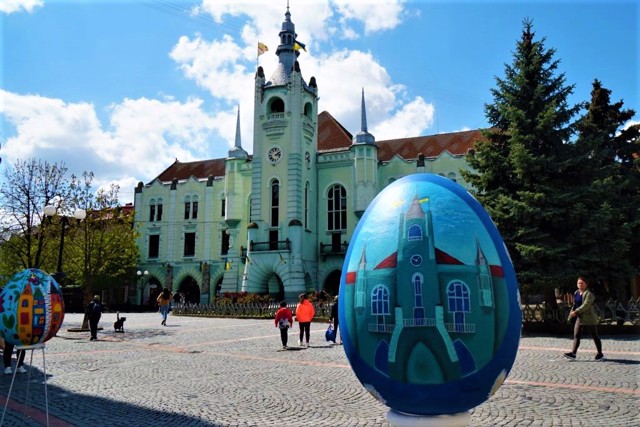
Town Hall
Architecture
The building of the Town Hall in Mukachevo has been serving its purpose for more than 100 years - now it houses the city council.
It was built according to the project of the Budapest architect Yanosh Bobul, Jr. When the first stone was laid in the foundation of the main clock tower, a letter was placed in which, in particular, it was reported that 14,416 people lived in the city, there were 1,553 houses.
The main portal is decorated with chimes installed by the master Yosyp Shovinsky. The main mechanism is located in a small oval room in the tower. A system of gears and levers connected by cables with two bells under the roof of the dome works in a glass box. Every 15 minutes, a hammer strikes the smaller bell, striking the quarter hours. Strikes on the big bell announce the hours. Thus, within the hearing range of the bells, the time could be determined by ear.
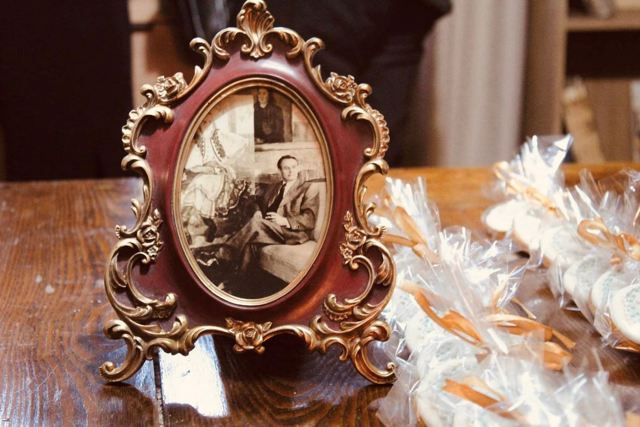
Adalbert Erdeli House-Museum
Museum / gallery
The memorial house-museum of the Transcarpathian artist Adalbert Erdeli was opened in 2022 in the restored house of the artist, located under the Palanok castle in Mukachevo.
Erdeli is considered the founder of the Transcarpathian school of painting, on his initiative the Uzhhorod Art School was opened in 1927.
Erdeli lived in this house for six years with his parents before leaving for Europe.
The creation of the museum was initiated by the famous artist, associate professor of the Transcarpathian Academy of Arts Attila Kopryva.
The interior of the house and the workshop in the yard are reproduced based on photographs and drawings by Erdeli himself. The exposition presents furniture, personal belongings, photographs, documents, early drawings of Erdeli, reproductions of his most famous paintings.
The Adalbert Erdeli Museum functions as a house of creativity. In the attic space on the second floor, there is an open space for exhibitions and guest rooms for artists.
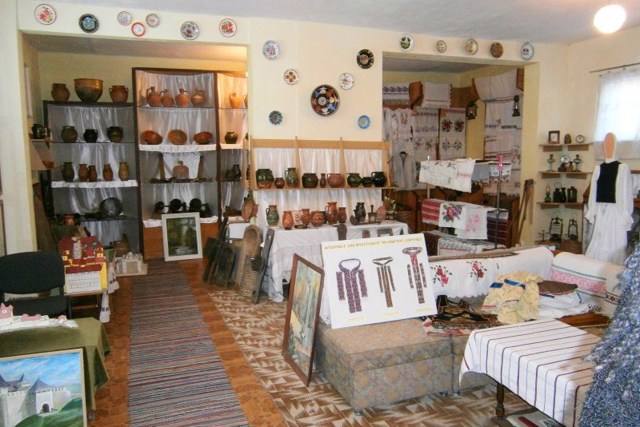
Applied Art of Transcarpathia Museum
Museum / gallery
The Applied Art of Transcarpathia Museum was created in 2004 at the Mukachevo State University on the initiative of the famous Transcarpathian artist, art critic and teacher Attila Kopryva.
His personal collection of Transcarpathian folk costumes formed the basis of the museum exhibition.
In addition to samples of folk clothing and embroidery, the museum presents household items (wooden products, pottery, weaving and wickerwork) and work tools (looms, spinning wheels, etc.).
Mukachevo in news and blogs
Reviews Mukachevo
Geographical information about Mukachevo
| {{itemKey}} | {{itemValue}} |
|---|---|
| Region |
Zakarpattia |
